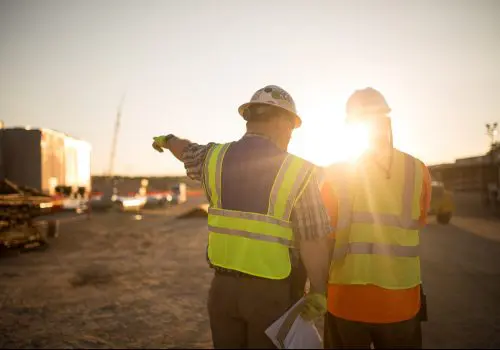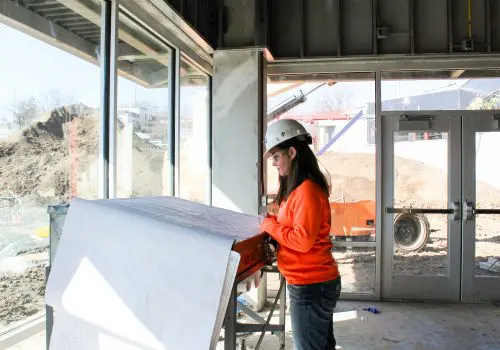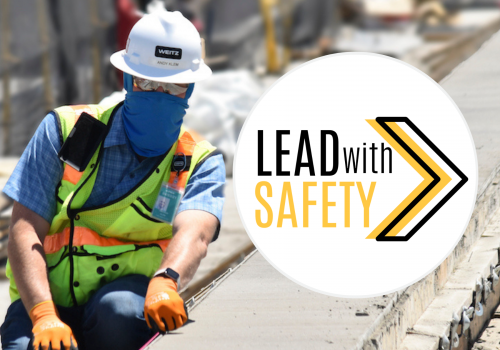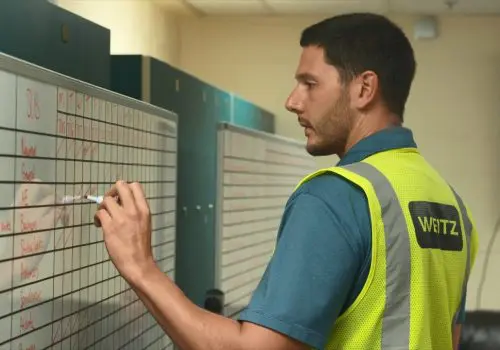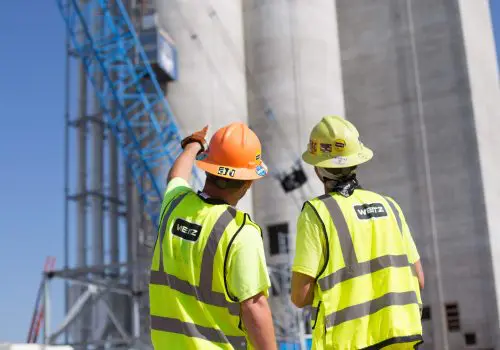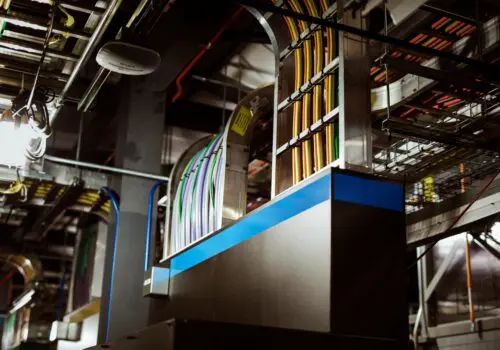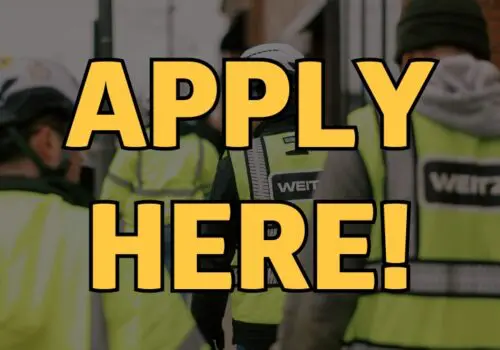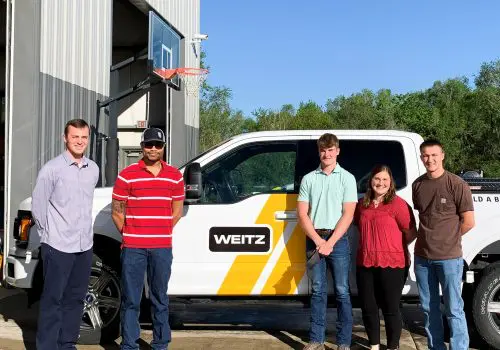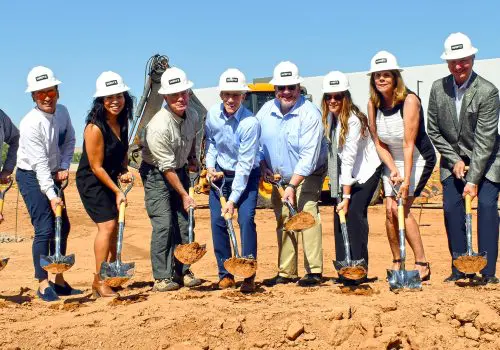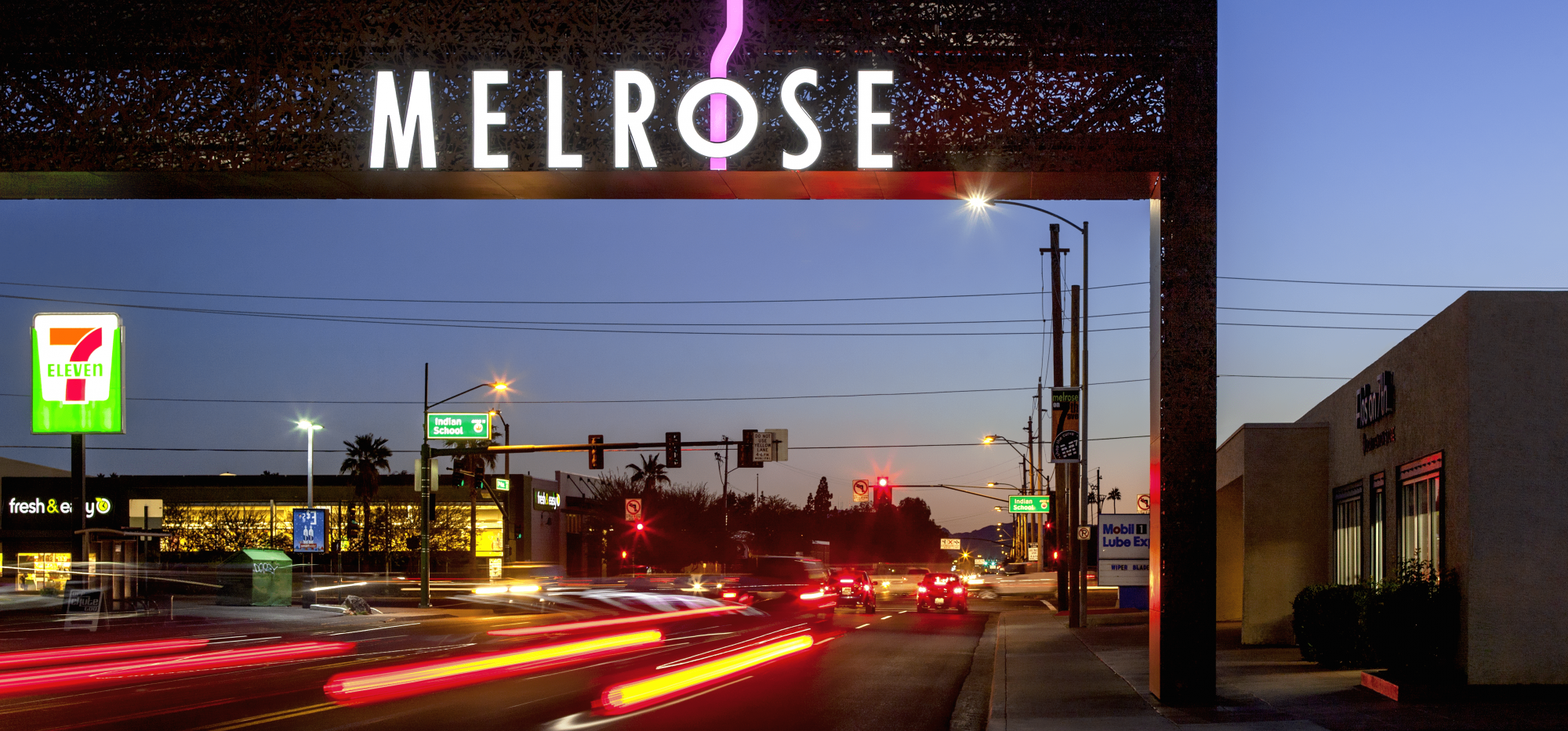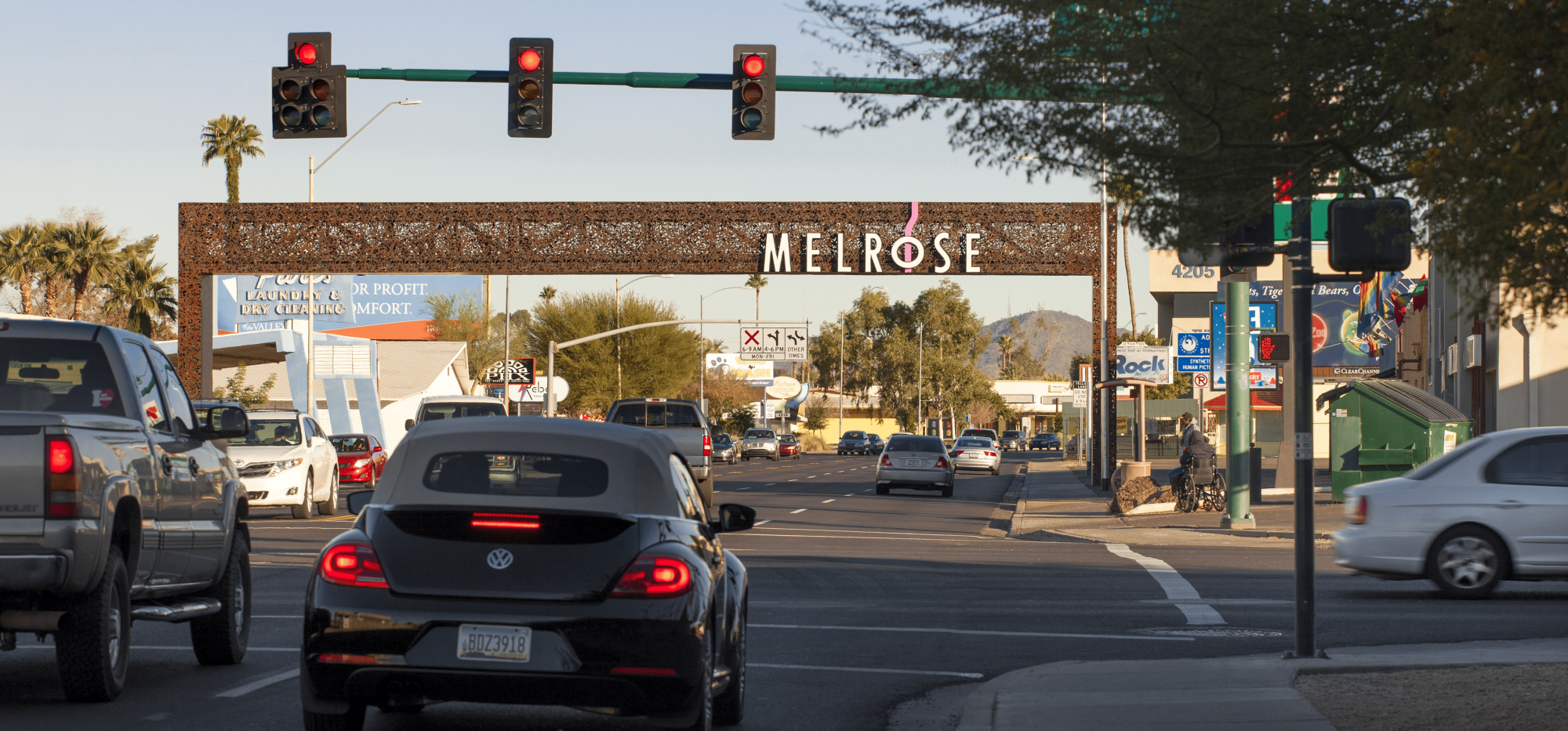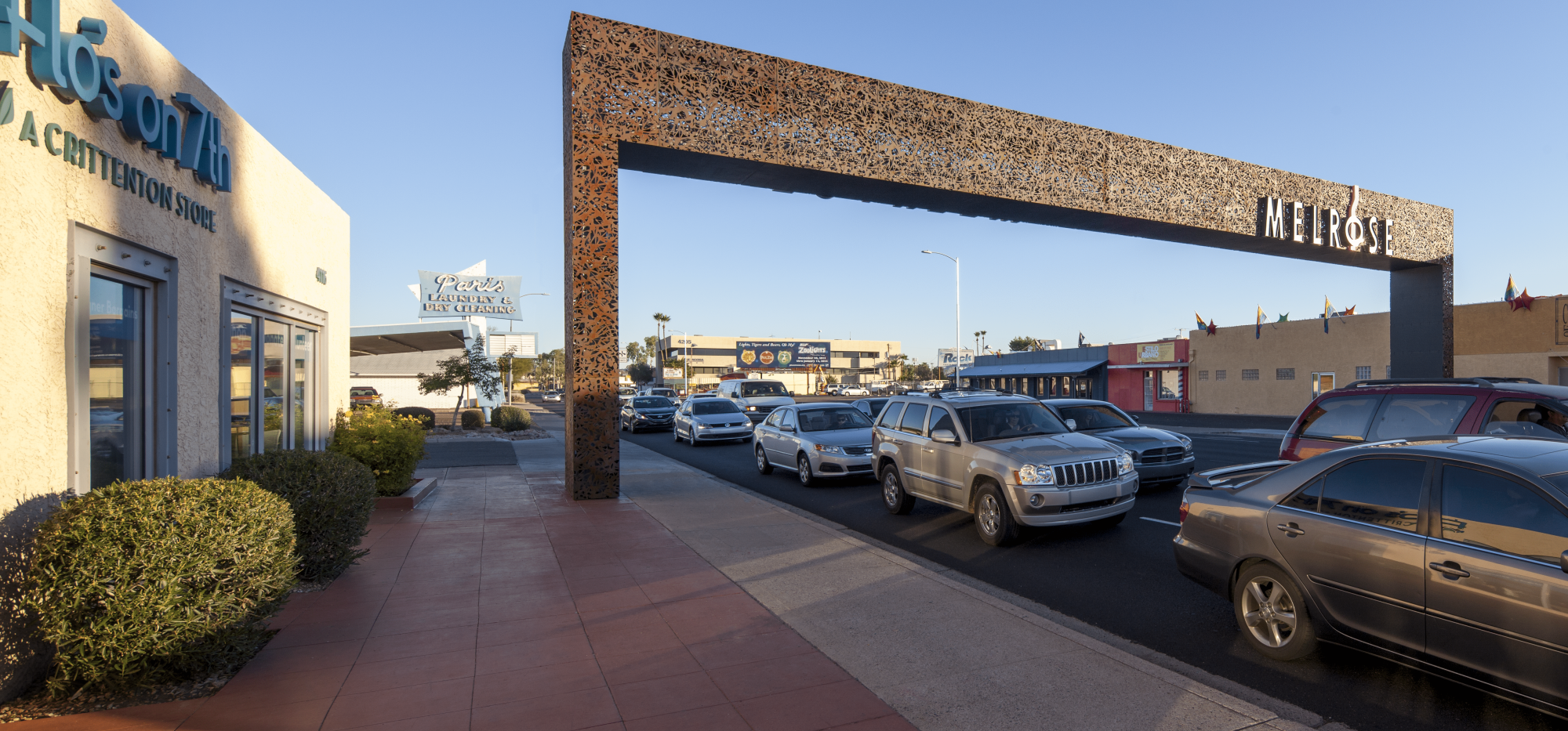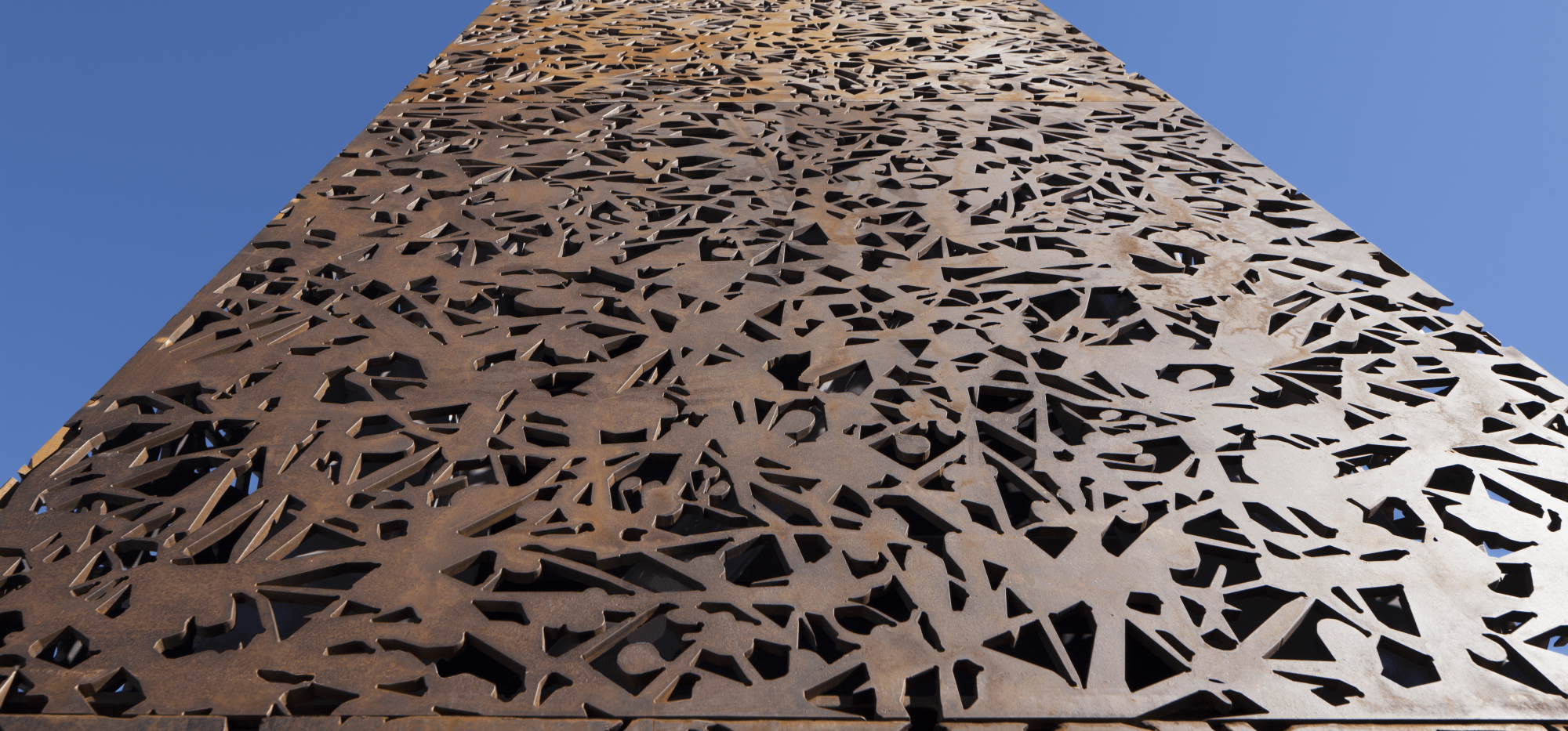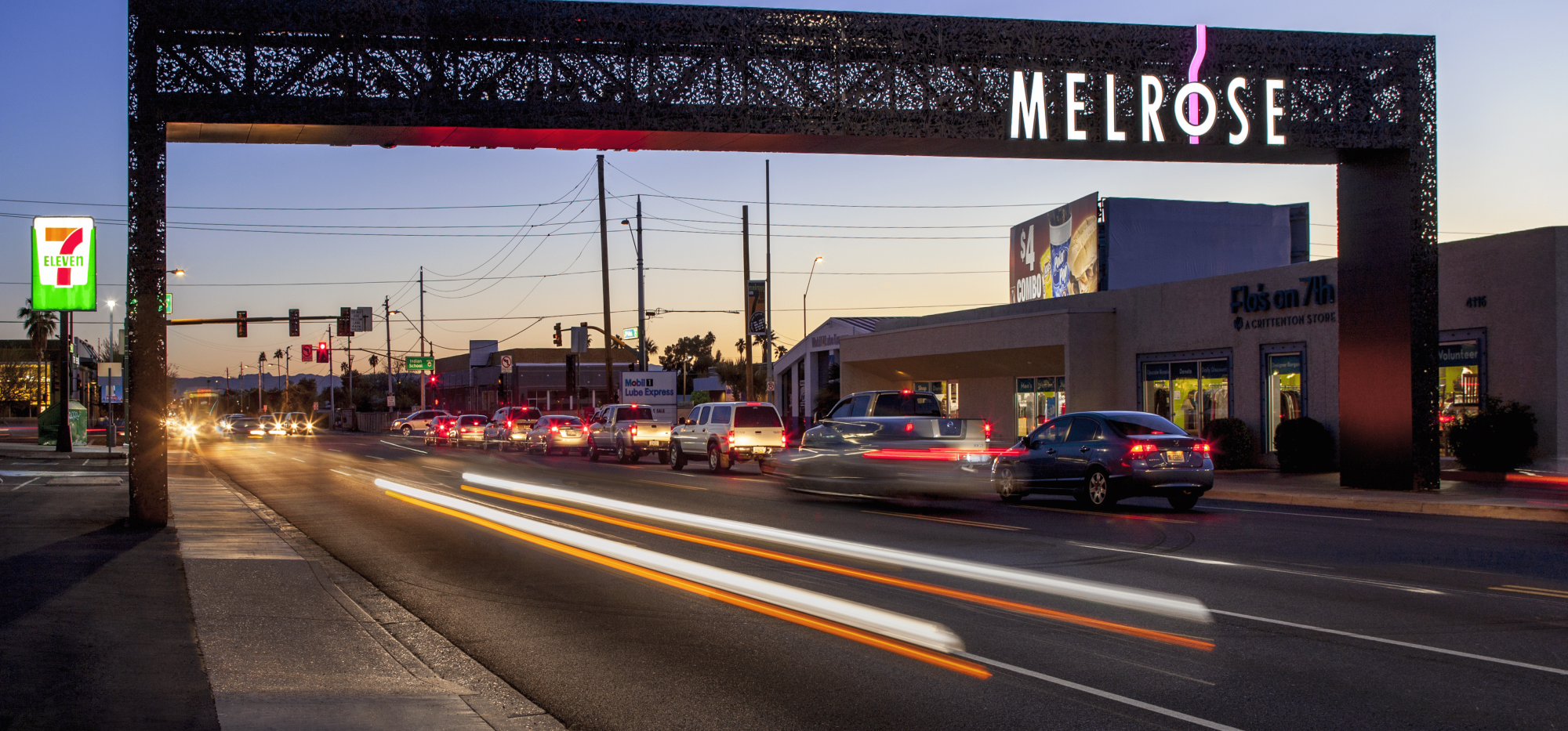Melrose District Gateway Monument
Phoenix, AZLocated at the threshold of the Melrose Neighborhood District in Central Phoenix, the new Gateway Monument creates a contemporary icon through intervention of an “urban portal” embodying the character of an authentic mid-century modern aesthetic prevalent throughout the community. The monument’s skin is an abstracted organic floral pattern made of over 175,000 plasma cuts in 1/2” steel plate. Weighing over 55 tons, the monument was erected to span the six lanes of 7th Avenue just north of Indian School road using two cranes in a single lift.
Due to the nature of the project and the constraints to construction, traditional building methods were not an option. The steel columns and truss were pre-fabricated off site and arrived at the project site using Just-In-Time delivery. Instead of a single large crane capable of lifting the 80,000 lb truss, the team determined it was safer to use two 90 ton cranes on either side of the street, one facing north and the other facing south, to simultaneously set the structure. The first delivery arrived between the cranes containing the columns for the structure. Each crane picked a column off the truck and set it in place on either side of the street. The next delivery arrived and the cranes each picked an end of the 90’ truss, maneuvered the truss to turn it 90 degrees and set it on the columns for permanent connection. The actual installation took only 2 hours, successfully completing the installation in a single night and without delay or additional impact to the public.
While it’s not uncommon to include planning for cranes, special attention was paid to the Melrose District Monument because the sign, totaling over 55 tons, was erected using two cranes with a single lift for the main truss. Defined by Weitz standards as a Critical Lift, this tandem pick planning went beyond typical operations and required approval by the Corporate Safety Director.
Designed to span over a six-lane city street, the cranes were constrained by the buildings and structures adjacent to the project site, creating even more challenges for the team. A Daily Lift Plan was created by the crane operator and installing subcontractor along with the Weitz Superintendent which included detailed crane locations, confirmation of conditions below the street’s surface, specific rigging required, and maximum allowable radius of the cranes. The operation was planned to take place overnight so special, high powered lights were included in the plan. Maximum wind loads were calculated to determine the safest weather conditions for the lift.
Weitz provided 5 additional Field Superintendents to the staff the night of the erection. The team held a pre-lift meeting with all of the workers who would be involved in the operation. Signalmen were designated for each crane, barricades and spotters were located along the perimeter for the safety of the public, and the entire explanation of how the cranes were to maneuver the load into place was reviewed with the entire crew.
